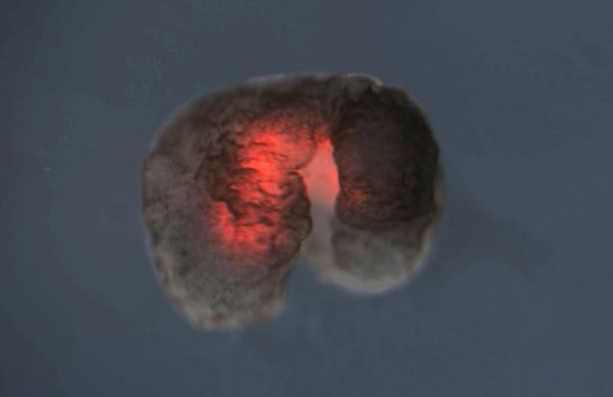
The Pac-Man-esque living robot looks very different to what you’d expect...
(Picture: Screenshot)Scientists have made a breakthrough with robots made from frog stem cells to create the first-ever robot that can reproduce itself.
First developed at the University of Vermont, Tufts University and Harvard University’s Wyss Institute for Biologically Inspired Engineering, the robots known as xenobots were unveiled back in 2020.
At less than a millimetre (0.04 inches) wide, the xenobots can self-heal, work together and they can also reproduce biologically in a way that is different to how plants and animals carry out this function.
Sign up to our free Indy100 weekly newsletter
Michael Levin, a professor of biology and director of the Allen Discovery Center at Tufts University and the co-author of the research told CNN: “Frogs have a way of reproducing that they normally use but when you ... liberate (the cells) from the rest of the embryo and you give them a chance to figure out how to be in a new environment, not only do they figure out a new way to move, but they also figure out apparently a new way to reproduce.”
So how did they manage to get the xenobots to reproduce?
Thanks to artificial intelligence, researchers were able to figure out which kinds of xenobots had more success at replication by testing which body shapes had more success in this area.
Turns out the most effective shape is one we would all be familiar with, as it was a C-shape reminiscent of arcade and 80s video game favourite Pac-Man - who would’ve thought?
“The AI didn’t program these machines in the way we usually think about writing code. It shaped and sculpted and came up with this Pac-Man shape,” said Josh Bongard, a computer science professor and robotics expert at the University of Vermont and lead author of the study.
Xenobots of this shape were able to find the tiny stem cells collect them together in their mouth for them to reproduce as xenobots within a matter of days.
This technology could prove extremely useful for tackling problems such as “deploying living machines to pull microplastics out of waterways or build new medicines,” according to Bongard.
Sounds like we could be hearing more about xenobots in the years to come.







